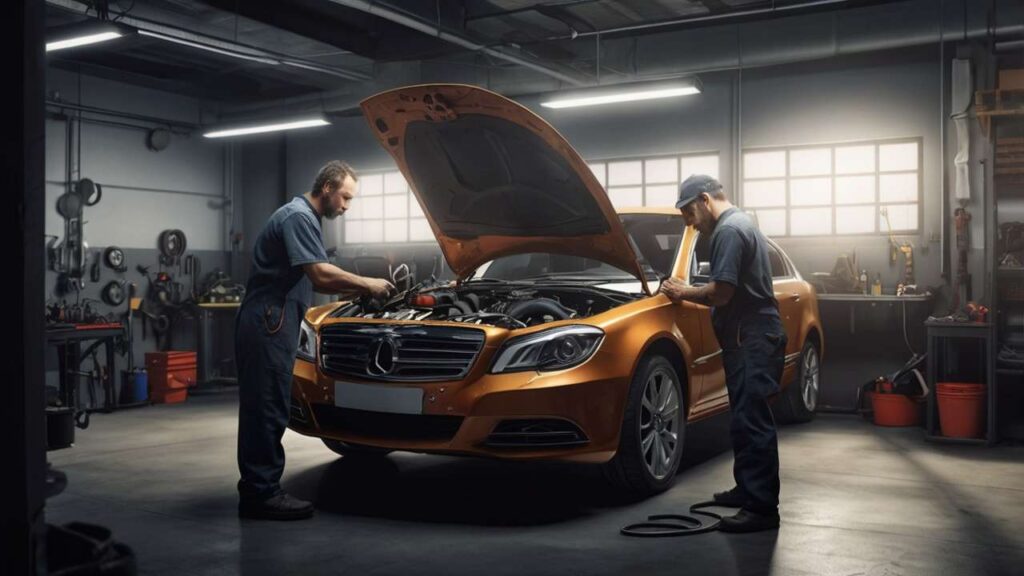Most car owners don’t realize it until it’s too late: the very first engine warning signs often whisper rather than scream. A slight engine knocking sound, a faint ticking engine noise, or even a strange squealing sound from the engine—these aren’t just background noise. They’re early cries for help. Ignoring them is like letting termites chew through your house. It may look fine on the outside, but inside, damage is growing.
I’ve learned the hard way. I once brushed off a ticking sound under my hood because it “wasn’t that bad.” Two weeks later, I was stranded on the side of the road with an overheating engine, paying thousands for a repair that could’ve been avoided. Prevention is not just cheaper—it’s survival for your vehicle. And to be blunt, listening carefully and acting early can keep your car on the road and your wallet intact.
- 1. Strange Knocking Sounds
- 2. Persistent Ticking Engine Noise
- 3. Squealing Sound from the Engine
- 4. Engine Overheating
- 5. Rough Idling and Stalling
- 6. Check Engine Light
- 7. Unusual Exhaust Smoke
- The Bigger Picture: Prevention vs. Breakdown
- Beyond Repairs: Choosing the Right Parts
- Case Study: Solving the 3 Most Common Engine Problems
- FAQs
1. Strange Knocking Sounds
If you’ve ever heard a metallic engine knocking sound, don’t convince yourself it’s normal. Professional mechanics explain that this knock often points to improper combustion inside the cylinders. “The knock is the engine’s way of telling you fuel is igniting at the wrong time,” says Richard Hayes, an expert engine diagnostic technician in North Carolina. Left untreated, it can damage pistons and connecting rods beyond repair.
Shops equipped with advanced diagnostic tools can identify whether it’s bad fuel, worn spark plugs, or a failing sensor. Repairs may involve recalibrating timing, replacing knock sensors, or in severe cases, rebuilding the cylinder head. This is where choosing a trusted engine repair specialist makes all the difference.
2. Persistent Ticking Engine Noise
Ticking noises often come from low oil pressure, worn lifters, or dirty valves. While some drivers ignore it, thinking “all old cars tick,” the truth is quite the opposite. Continuous ticking is an abnormal engine sound that signals lubrication isn’t reaching where it should. Without oil cushioning metal parts, friction eats them alive.
I once saw a reliable old Honda lose its entire camshaft because the owner thought ticking was harmless. A $70 oil pump replacement turned into a $2,000 rebuild. That’s why professional maintenance schedules—changing oil, replacing filters, and using the right viscosity—are critical.
3. Squealing Sound from the Engine
A high-pitched squeal is not a joke; it’s often your serpentine belt slipping. This belt powers vital systems like the alternator, power steering, and A/C compressor. Once it breaks, you won’t just lose comfort—you could lose steering control.
Reliable mechanics use belt tension gauges to check for wear. Sometimes, it’s a quick fix with a new belt. Other times, pulleys or bearings must be replaced. Either way, addressing it early prevents sudden breakdowns in the middle of traffic.
4. Engine Overheating
Few things destroy an engine faster than overheating. Warning lights, steam from the hood, or a spiking temperature gauge are not “maybe later” problems. Overheating can warp the cylinder head or crack the block itself.
Prevention involves routine cooling system checks—flushing coolant, testing thermostats, and inspecting radiators. A professional garage with pressure testers can detect leaks invisible to the eye. As one expert put it, “Every overheated engine I’ve seen was a preventable failure.”
5. Rough Idling and Stalling
If your car shakes at red lights or stalls at random, take it seriously. This is usually the engine gasping for proper air-fuel mixture. Issues can range from dirty throttle bodies to failing fuel injectors.
Modern diagnostic tools now connect directly to the ECU (engine control unit), making it possible to identify failing sensors in minutes. But without trusted professionals, you’ll waste money on trial-and-error part swaps.
6. Check Engine Light
The most dreaded light on your dashboard. Sometimes it’s minor—like a loose gas cap—but other times it signals catalytic converter or transmission issues. Ignoring it is risky because the ECU is literally telling you the car is sick.
Learning how to decode this light has become its own science. Shops now use OBD-II scanners to pull error codes. That’s why articles like Decoding the Check Engine Light: Essential Diagnostic Tools and Methods for Modern Vehicle Repair are so valuable—they empower drivers to understand what’s going on instead of panicking blindly.
7. Unusual Exhaust Smoke
Blue smoke signals oil burning, white smoke could mean coolant leaks, and black smoke points to excessive fuel. Each one is a red flag. Exhaust should be nearly invisible; anything else is a sign your engine is struggling.
Repairs can be as simple as replacing gaskets or as complex as a full head gasket job. Skilled mechanics often use borescopes—tiny cameras inserted into the engine—to see what’s happening inside before tearing it apart.
The Bigger Picture: Prevention vs. Breakdown
Catching these engine warning signs early is more than a money saver—it’s a stress reducer. As highlighted in Maintenance vs. Breakdown: The Financial Case for Consistent Engine Care and Service Schedules, preventive care often costs pennies compared to full breakdown repairs. Consistency is boring, yes, but breakdowns are always dramatic and expensive.
I once kept a Toyota alive past 250,000 miles just by never skipping oil changes and inspections. Compare that to my friend who ignored a squealing belt—he spent more fixing one breakdown than I spent on five years of routine maintenance.
Beyond Repairs: Choosing the Right Parts
Sooner or later, parts wear out. That’s where Choosing Between OEM, Aftermarket, and Reconditioned for Your Engine Repair becomes relevant. OEM parts are reliable but pricey. Aftermarket options vary wildly in quality. Reconditioned parts can be affordable yet still dependable if sourced from trusted suppliers. A reliable mechanic will guide you through these choices rather than upsell unnecessarily.
Case Study: Solving the 3 Most Common Engine Problems
One garage in Charlotte documented their data and found the three most common issues: knocking, overheating, and misfires. By catching these early, they saved customers nearly $500,000 collectively in major engine rebuilds. The study underlines a simple truth: the earlier you act, the less you pay.
More detail on this is shared in Solving the 3 Most Common Engine Problems, which has become a go-to resource for car owners wanting practical fixes.
Engines are evolving, and so must the conversations around their care. For example, hybrid and electric vehicles introduce new challenges, from battery cooling systems to high-voltage diagnostics. Topics like how AI-driven diagnostics are reshaping engine repair or eco-friendly disposal of engine oils and parts deserve attention. Another interesting area is predictive maintenance, where data sensors tell you a part will fail before it actually does.
These aren’t just “future content ideas.” They’re natural expansions of the same conversation, helping drivers transition from traditional engines to modern systems without losing reliability. For more resources, readers can check out Pro Service Tips or browse the dedicated engine repair section.
FAQs
1. How can I tell if a knocking sound is dangerous?
If it increases with acceleration, it’s almost always a serious sign of improper combustion or damaged engine components. Don’t ignore it—get a professional diagnostic immediately.
2. Can I drive with a ticking engine noise?
Technically yes, but it’s a gamble. The ticking means friction is happening where it shouldn’t. Driving longer will make the damage worse and costlier.
3. Is squealing always from the belt?
Most commonly, yes. But squeals can also come from bearings or pulleys. A mechanic can isolate the exact cause in minutes with the right tools.
Engines rarely die suddenly—they give clues, sometimes subtle, sometimes loud. The challenge is paying attention to these engine warning signs before they become wallet-crushing repairs. Listen to knocking, ticking, squealing, overheating, or smoke. Treat them not as annoyances, but as the engine’s language.
Your car deserves care, and you deserve peace of mind. Share this post with your fellow drivers using the share buttons below. It might just save someone else from being stranded on the highway at midnight.


